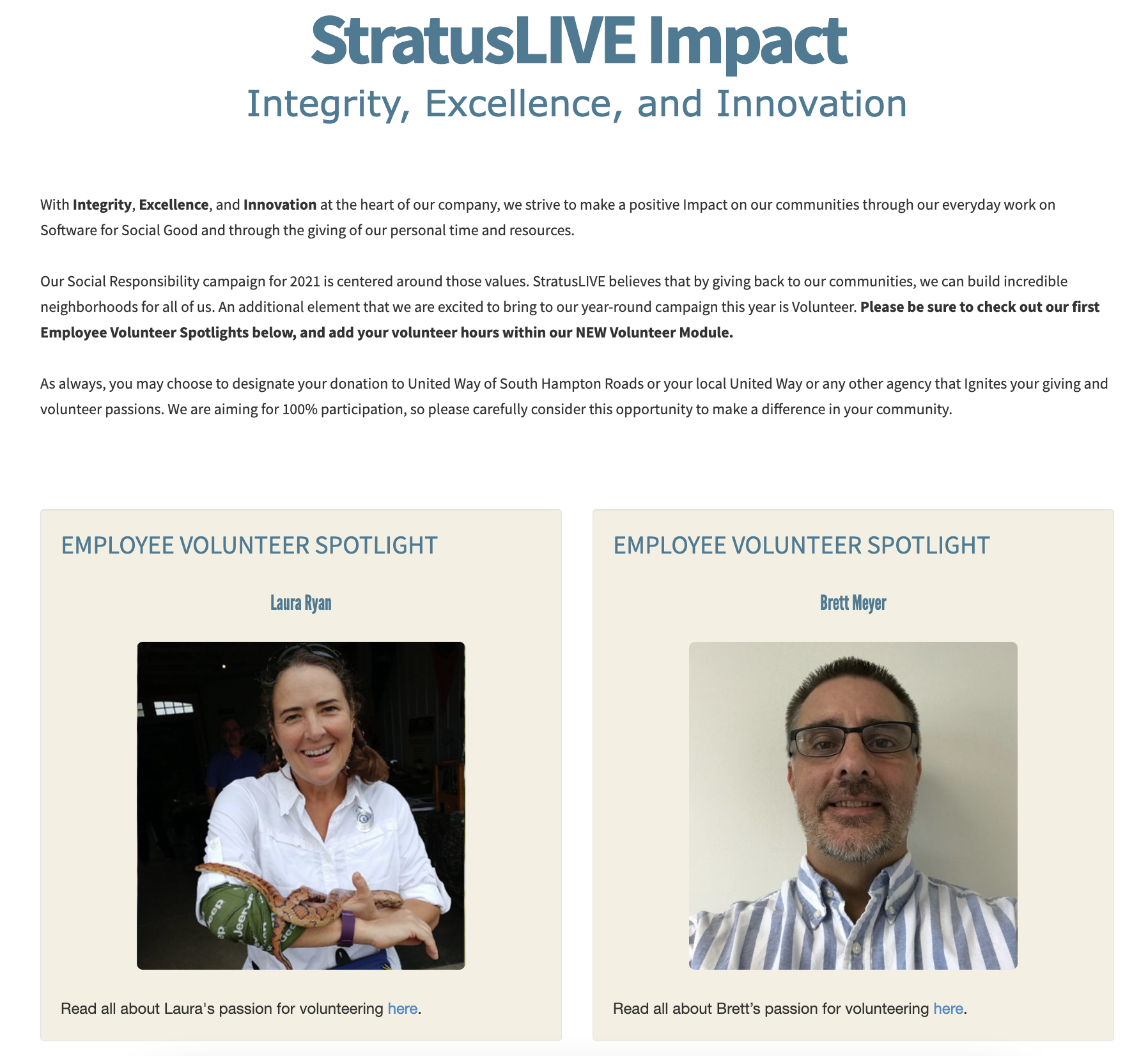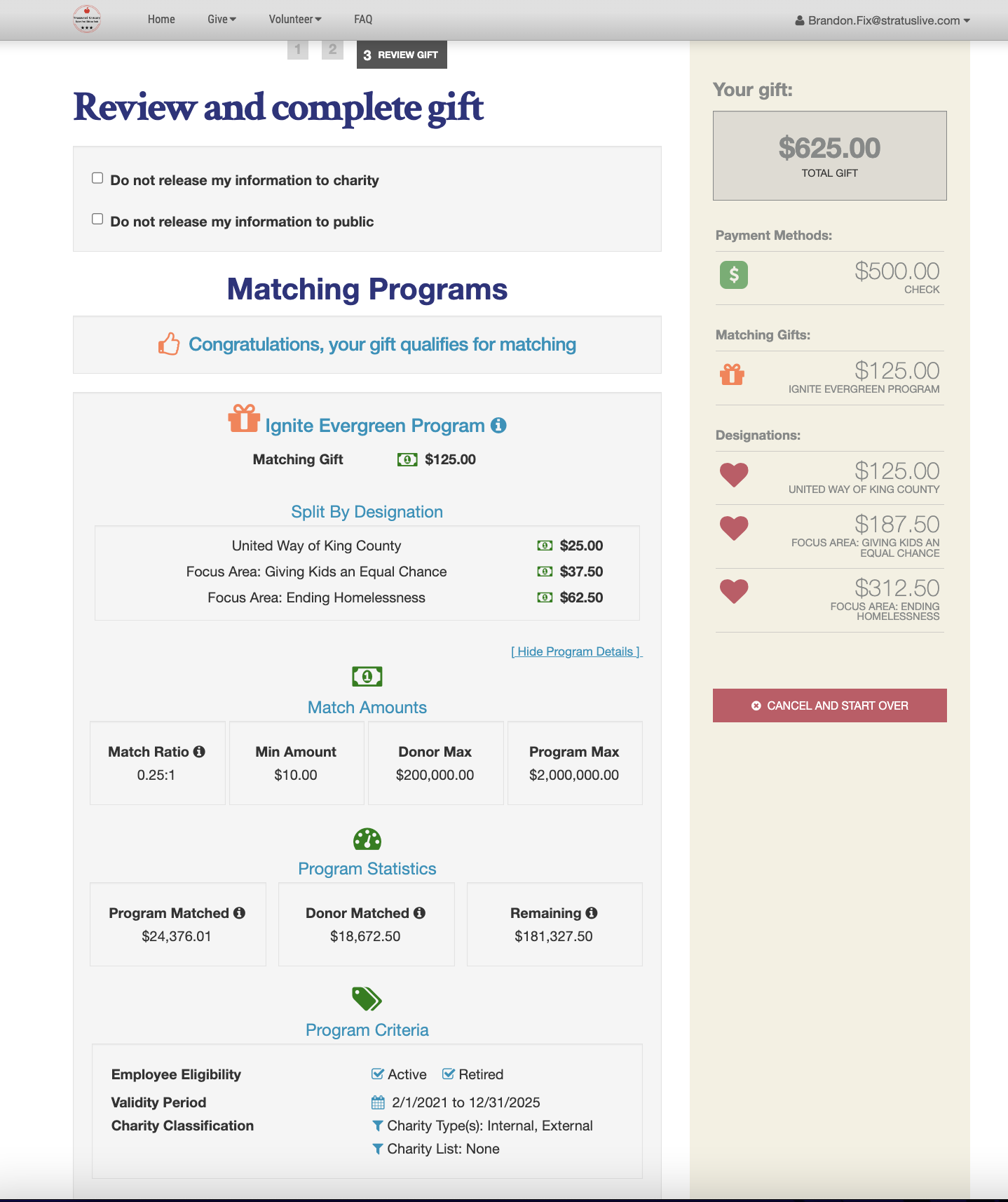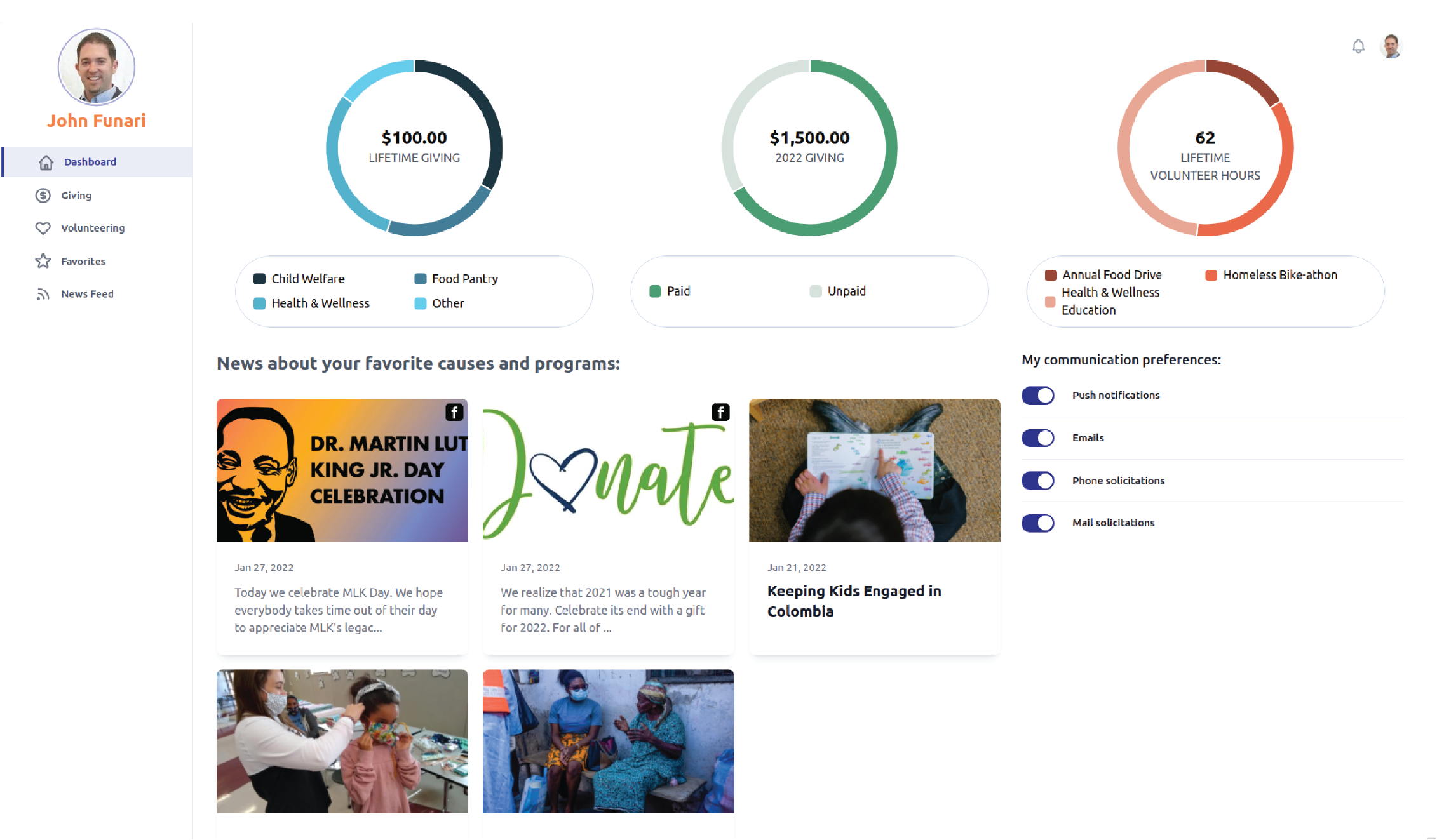Nonprofit organizations work tirelessly to secure and build corporate support through Corporate Social Responsibility (CSR) programs. These programs offer a unique blend of initiatives including corporate contributions through a foundation, cause marketing initiatives, or sponsorships. Nonprofit organizations secure other forms of corporate support by way of corporate employees through matching gifts, volunteer grants, skills-based volunteering, or employee giving programs.
In addition to having a tailored program offering, each corporation has a specialized CSR mission that guides the causes and organizations the business supports. This mission should align with their core business and reflect the company’s values.
As the business’ social, environmental, and governance goals shift, they may redirect funds from one nonprofit to another. If your organization happens to lose funding, this could dramatically impact your organization’s ability to deliver upon your mission. However, if you’ve built positive donor relationships through your workplace giving program, you will be better positioned to secure these donors’ support for the long-term.
Here are five ways to cultivate your corporate campaign donors into committed donors (no matter their workplace):
1. Showcase your workplace donors’ stories and affiliations with your cause.
Your donors give or volunteer with your organization for a reason; this reason reflects their affinities toward your cause. By sharing their passions, you showcase your gratitude for their support while you demonstrate your mission’s worthiness. This may help you attract new donors.
Work with your corporate partners to survey your workplace donors to gain an understanding of their affinities. This survey will benefit not only your organization but also your corporate partners.
Based upon the information you receive, you can tailor your communications and outreach to your donors. Your corporate partners will gain insight into their employee giving program to tweak their strategy for increased engagement and participation. With your donor’s permission, this information could then be shared on your website, social media, or workplace giving platform.
Here are some survey questions to include:
- How did you find out about our organization?
- Why do you donate to our organization?
- Have you, a family member, or friend received services from our organization?
- What is your specific interest around our cause?
- How do you participate with our cause?
- What is most important to you regarding our cause?
How can you showcase your survey results?
Within StratusLIVE Ignite Give at Work, workplace giving solution, campaign administrators can include an employee spotlight. This spotlight can include photographs of your workplace donor participating with your cause and an interview with him or her. This spotlight customizes your workplace giving solution for each corporate partner while it highlights your individual donor relationships.

2. Allow workplace donors to choose their designations.
In today’s workplace, donors demand choice in supporting the causes, funds, and agencies most important to them. According to America’s Charities, 76% of donors they surveyed said that “the ability to choose what cause they give to is imperative.”
Nonprofit organizations can offer donor choice through designations. These designations allow you to give your supporters the option of directing their gifts toward a specific cause or program offered by your organization. By offering options, you empower your donors to apply their gifts to the program they deem most worthy. This choice makes them feel invested in your mission for the long-term.
Your fundraising teams can then use this information to understand which programs are most important to your donors. Say for example your top designation is your children’s and families’ initiatives. Your event team may consider hosting an event in which you discuss your impact in this area. You may even conduct a giving day in honor of this initiative. You can also use this information to develop stewardship content based upon the results of the programs.
Offer designations on workplace giving pages or general donation pages, so your donors personalize their giving experiences and commit to further involvement.

3. Offer automated matching.
Matching gift programs are a tremendous opportunity to engage your workplace donors and increase their contributions. By promoting matching gift programs, your organization incentivizes giving. According to Double the Donation, “84% of survey participants say they’re more likely to donate if a match is offered.”
Matching gift requirements differ from company to company. Some organizations may require a minimum donation amount to match a gift. Companies may match all, double, triple, or a portion of the gift amount. They may also cap the amount of matching gifts allowed per employee per year, or limit the types of organizations donors may support.
No matter the requirements, it’s important that nonprofit organizations take advantage of this revenue source. Encourage donors to participate in their company’s matching gift program on your website, donation forms, and direct mail appeals. To remain competitive with CSR software vendors, your workplace giving solution can automate the matching process. This will provide your donors with an easy giving experience, so they do not forget this step within the donation process.

An automated match provides your workplace donors with an easy, impactful giving experience. This positive experience will encourage their continued giving to your organization.
4. Provide self-service functionality for your workplace donors.
Donors expect the ability to interact and engage with the causes and organizations most important to them whenever, wherever. Self-service technology offers your donors this flexibility, so they can drive involvement with your organization with minimal assistance.
Another benefit of donor applications through self-service technology is the personal, tailored experience it offers your donors. Donors feel proud of their contributions and connected with your mission when they view their gifts’ impact. As donors view news related to your organization, they feel fulfilled and connected with your cause. This reinforces their identity as philanthropists and encourages deeper engagement.
Important self-service functionality includes:
- Ability to update communication preferences
- Pause, stop, or change the amount of pledges
- View lifetime giving data
- Print tax receipts
- View volunteer commitments
- Follow favorite causes and programs
All this data within a personal donor app such as Donor Hub serves as a permanent reminder of the impact of your donors’ contributions. This history compels them to continue their support – no matter their workplace.

Your organization also benefits from this self-service technology as your teams no longer need to update pledges or donor records on behalf of your donors. The records remain current, so you do not utilize bad data. Furthermore, your organization retains these donors within your system, so you can communicate with them throughout their lifetime.
5. Promote involvement in affinity groups.
Affinity groups or donor networks are groups of donors that share common interests or similar demographics. These commonalities compel these individuals to contribute to causes that are important to them. Participation in these groups foster a sense of belonging and community. Donors feel ‘seen’ and empowered to create a more inclusive and equitable future. They also benefit from networking opportunities that will support them in their careers.
Your organization offers these donors a ‘safe place’ to congregate and discuss important and timely issues. These participating donors view your organization as an advocate. By serving them in this way, you will benefit from deepened involvement with your cause through increased donation amounts, recurring giving, and promotion within their networks.
Examples of affinity groups to offer include:
- Young Leaders (individuals in their 20s, 30s, or 40s)
- Planned Giving Societies (individuals who include your organization in their estate plan)
- Women Groups
- Diverse Leaders
You could also create affinity groups based upon a profession (technology or creative professionals) or common cause interest (environmental justice). Each group should have a minimum contribution threshold to join.
How can your workplace giving technology support your affinity groups?
Donation pages on your workplace giving platform can promote donors’ involvement with an affinity group based upon their contribution amount. For example, if a donor enters a gift amount that would qualify her for a ‘Women for Change’ affinity group, your system can automatically ask if she’d like to join. This makes it easier for your donors to increase their involvement with your cause.

A CSR program offers a steppingstone to engage with your workplace donors. As you spotlight your workplace donors, provide designation options, and offer automated matching, you foster their relationships with your cause. By providing them with self-service technology and facilitating community through affinity groups, these donors will remain committed to your cause no matter their workplaces.






